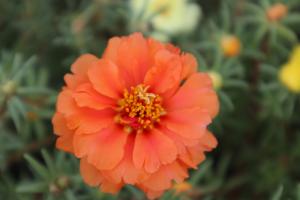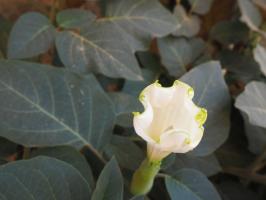Introduction
Apples are one of the most popular fruits in the world, enjoyed for their crisp texture and sweet taste. But have you ever wondered what kind of vascular plant an apple tree is? In this article, we will explore the anatomy and characteristics of apple trees, and learn more about the type of vascular plant they belong to.
Vascular Plants
All plants are divided into two main groups: vascular and nonvascular. Vascular plants have specialized tissues that transport water, nutrients, and sugars throughout the plant. These tissues include xylem and phloem, which make up the plant's vascular system.
Apple Tree Anatomy
Apple trees are a type of flowering plant that belong to the Rosaceae family. They are deciduous and can grow up to 30 feet tall. The tree's leaves are simple, alternate, and have serrated edges. The fruit of the apple tree is actually the swollen ovaries of the flower, which contain seeds.
The apple tree's vascular system is made up of xylem and phloem. Xylem transports water and nutrients from the roots to the leaves, while phloem transports sugars from the leaves to the rest of the plant. These tissues are responsible for the apple tree's ability to transport water, nutrients, and sugars throughout its structure.
Life Cycle
Like all plants, apple trees have a life cycle that begins with a seed. The seed germinates, and a root and shoot emerge. As the seedling grows, it eventually develops into a mature apple tree that can flower and produce fruit.
The apple tree's flowers are pollinated by bees, which transfer pollen from one flower to another. Once pollinated, the flower's ovary begins to swell and develop into an apple. Once the apple has matured, it will fall from the tree or be picked by humans or animals.
Cultivation
Apple trees are grown in orchards for commercial production or in home gardens for personal use. They require full sunlight and well-draining soil. Apple trees must be pruned regularly to allow light to penetrate the tree's canopy and promote fruit production. They can be propagated from seeds, cuttings, or grafting.
Apple trees are susceptible to many diseases and pests, including apple scab, apple maggot, and codling moth. They can be treated with various pesticides and fungicides, but some people prefer to use organic and natural methods to control pests and diseases.
Conclusion
Apple trees are a type of vascular plant that belong to the Rosaceae family. Their anatomy includes specialized tissues that transport water, nutrients, and sugars throughout the plant. Apple trees have a life cycle that begins with a seed and ends with the production of fruit. They are cultivated in orchards and home gardens and require regular pruning and care to stay healthy and productive.

 how many times do yo...
how many times do yo... how many planted tre...
how many planted tre... how many pine trees ...
how many pine trees ... how many pecan trees...
how many pecan trees... how many plants comp...
how many plants comp... how many plants can ...
how many plants can ... how many plants and ...
how many plants and ... how many pepper plan...
how many pepper plan...






























